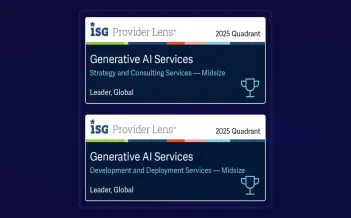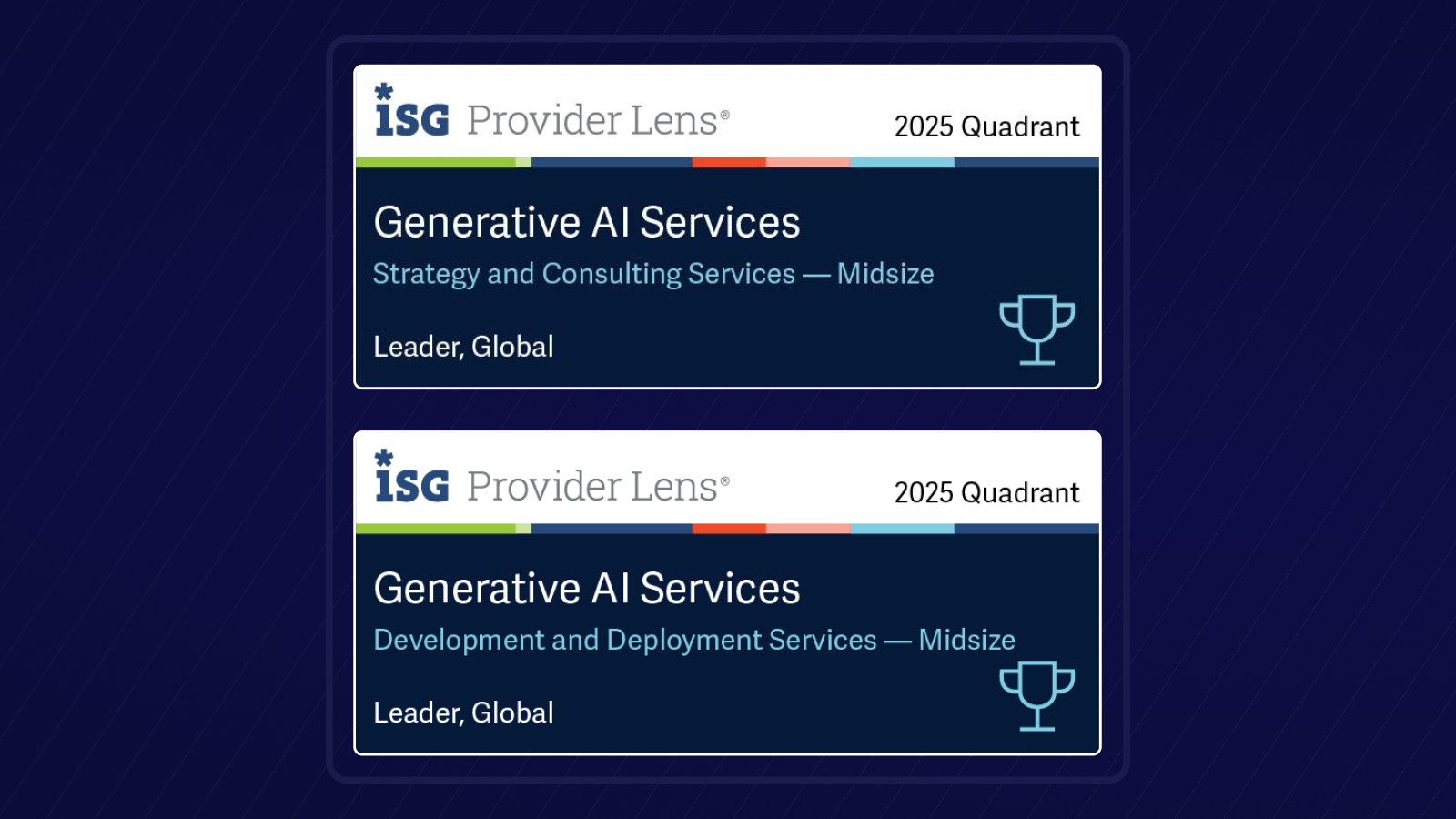Higher education is at an inflection point
The college-age population is projected to decline by nearly 15% between 2025 and 2029, while public funding per student has dropped significantly over the past decade. Students today are questioning the return on investment of a degree, with only 22% of U.S. adults believing a four-year degree is worth the cost if loans are required. Students are also more transactional than ever, willing to switch schools for programs that offer a better digital experience and clearer career outcomes.
Four challenges, in particular, stand out
- The enrollment cliff – with fewer college-age students, increasing alternative pathways, and growing demand for micro and stackable credentials, traditional degree enrollment is declining as the future of work reshapes skill needs.
- Changing student demographics – from Gen Z digital natives to mid-career professionals, learners today are demanding flexibility, personalization, and clear ROI.
- Funding shrinkage – public funding cuts and cost escalations are squeezing institutions, forcing them to rethink sustainability.
- Volatility and uncertainty (VUCA) – constant disruption from technology, labor market shifts, and global instability are making long-term planning increasingly difficult.
Addressing these challenges requires a new way of operating
Higher education’s challenges don’t exist in isolation—they’re unfolding alongside a massive technological transformation. Over the past decade, the focus has shifted from automation, connectivity, and intelligence to human-centric collaboration—driven by advanced technologies like AI and robotics that are blurring boundaries between the physical, digital, and biological worlds.
Today’s environment, powered by Agentic and Generative AI, robotics, IoT, big data, cloud, and AR/VR, emphasizes human–machine collaboration with an eye on sustainability, resilience, and personalization.
In this new context, where universities are competing not just on their program offerings but also on the experiences they create for the students, the age-old, campus-bound, people-intensive, and largely offline operating model can no longer meet the demands of a digital, connected future.
The solution does not lie in addressing each challenge separately with incremental fixes. It necessitates reimagining the entire model around AI and digital ecosystems.
A structural reset is needed!
To thrive in this landscape, where technology and expectations are reshaping the industry, universities must act boldly on at least these fronts:
- Reach new student populations beyond current geographies
- Augment program portfolios with future-ready skills, even those not yet widely recognized
- Reimagine the entire student journey (enrollment, learning, and career) through AI, data, and seamless digital experiences
This represents a structural reset of higher education's operating model, aligning institutional decision-making with the transformative power of AI and the demands of a new learner economy.
The 3 pillars of reinvention
Universities can reinvent themselves using these 3 pillars while addressing their key challenges.
Pillar 1: Expand reach and relevance
The workforce is changing. Traditional employees now work alongside gig workers and, increasingly, AI tools that reshape how tasks get done and what skills matter.
Higher education needs to expand beyond the traditional 18 to 22-year-old undergraduates. The new consumer base includes working adults, career shifters, and gig workers seeking to upskill or transition into new roles.
Programs should target emerging skills that industries will need but are only beginning to articulate: ethical AI use, climate tech, human-AI collaboration, and digital trust.
Institutions must also expand beyond geography. Learners today are borderless, and universities can no longer be confined by campus footprints. With AI as a core enabler, they can deliver world-class online programs that rival in-person experiences, blending immersive technologies like AR and VR with adaptive learning platforms.
In essence, universities must shift from serving a narrow age band with static curricula to becoming platforms for lifelong, dynamic skilling in an evolving workforce ecosystem across the globe.
Hyper-personalization is key to student success
Today’s learners are diverse in age, background, and career stage, and they demand flexibility and personalization. A one-size-fits-all curriculum no longer works. Universities need to design stackable, modular, and career-connected learning pathways that adapt to individual learner journeys.
To truly improve student outcomes at scale, learning support must also evolve. This is where hyperpersonalization comes in. Using AI, performance data, and predictive analytics, institutions can deliver targeted nudges, content, and coaching—based on each learner’s path, progress, and challenges.
Imagine a first-gen student getting personalized reminders on financial aid renewal, a biology major receiving just-in-time microlearning before a lab, or a struggling sophomore being matched with peer mentors based on shared context. These aren’t distant possibilities—they’re entirely possible with a strategically reimagined AI-first ecosystem that supports the student through their entire journey—from enrollment to orientation to academics to graduation to alumni.
Read Also: Why Higher Education Must Embrace Student-Centric Strategies to Survive
Pillar 2: Transform operations with AI
With public funding per student in decline, universities face mounting financial pressure. Curriculum and program design, academic operations, and student support, all of these processes are still highly people-dependent, with constrained scalability. Although universities have initiated point solutions to adopt automation and improve efficiency, the solution is not cost-cutting alone, but transforming operations by
- Re-imagining processes through AI: Agentic AI can power enrollment support, student services, and advising. Predictive analytics can improve retention and reduce costly attrition. AI-driven forecasting can inform smarter resource allocation.
- Re-building the technology stack: Integrating systems, models, and data to enable seamless collaboration between humans and AI platforms across LLMs, scoring engines, CMS/LMS, and proctoring tools.
- Re-engineering skills: Redefining stakeholder roles in the human-AI co-design ecosystem and establishing a governance model, data lifecycle, and human-in-the-loop checkpoints.
When AI becomes a strategic foundation rather than a bolt-on solution, institutions can do more with less, unlock new revenue streams, and create scalable models of high-quality education.
Pillar 3: Build resilience through distributed models
In an unpredictable world, relying on fixed campuses and local populations creates location risk. Universities must instead build digitally-enabled ecosystems that tap into global pools of talent and learners. Online platforms and remote learning allow universities to maintain continuity during times of political, social, or environmental upheaval. Faculty can teach from anywhere, industry experts can deliver micro-courses, and AI agents can scale support across time zones.
Students gain access to diverse ideas, cultures, and specialized expertise regardless of their location. This exposure encourages divergent thinking and adaptability, which are crucial for navigating complex challenges and driving innovation in a global market.
By moving from location-bound institutions to borderless platforms, universities can reduce vulnerability, respond quickly to shifts, and remain resilient in a VUCA environment.
The Enabler: AI Centers of Excellence
The real risk for universities is adopting AI too shallowly, not too quickly. Scattershot pilots and siloed experiments won't solve the structural challenges facing higher education. What's needed is an AI Center of Excellence (CoE): a strategic command hub where vision, governance, talent, and technology converge.
An AI CoE doesn't just implement tools. It rewires how universities think, decide, and act. It becomes the place where ethical frameworks are set, faculty and staff are reskilled, and data-driven insights translate into new programs, new markets, and new learner experiences.
In essence, the CoE positions the university for the era of human-tech collaboration and the Experience Economy, turning AI from a buzzword into the backbone of higher education's future
The time to act is now!
Higher education stands at a crossroads. Universities that reimagine their operating models around AI, borderless ecosystems, and hyper-personalized learning will thrive. Those that cling to incremental changes risk becoming irrelevant.
The question is not whether to transform, but how quickly you can move. Start by building your AI Center of Excellence. Expand your reach beyond campus borders. Personalize at scale. Make AI your strategic foundation, not an add-on.
The future of learning is being written now. Will your institution lead it?










